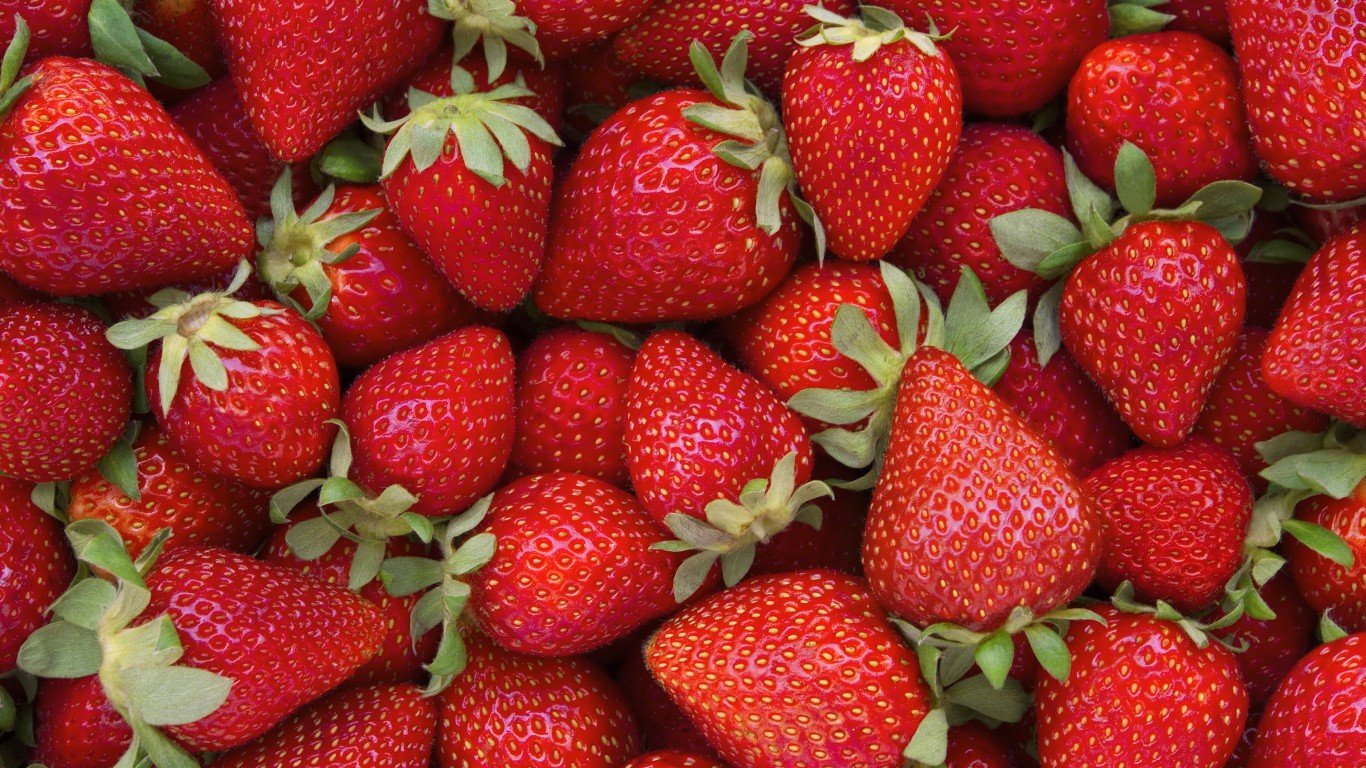
15. Berries & Grapes
> GHG emissions in kg of CO2 equivalents per kg of food: 1.5
> GHG emissions in kg of CO2 equivalents per nutritional unit: 1.5 per 1 kg (21 highest)
> Land use in sq meters per kg of food: 2.4 (21st lowest)
> Freshwater withdrawal in liters per kg of food: 419.6 (21 highest)
You may think of grapes as distinct from berries, but the two fruits are actually both berries. Grapes belong to a family of plants known as Vitaceae; the plants within this family produce berry-like fruits. A berry is defined as a fleshy fruit without a stone produced from a single flower. Where the confusion comes is that some grapes have a hard pit.
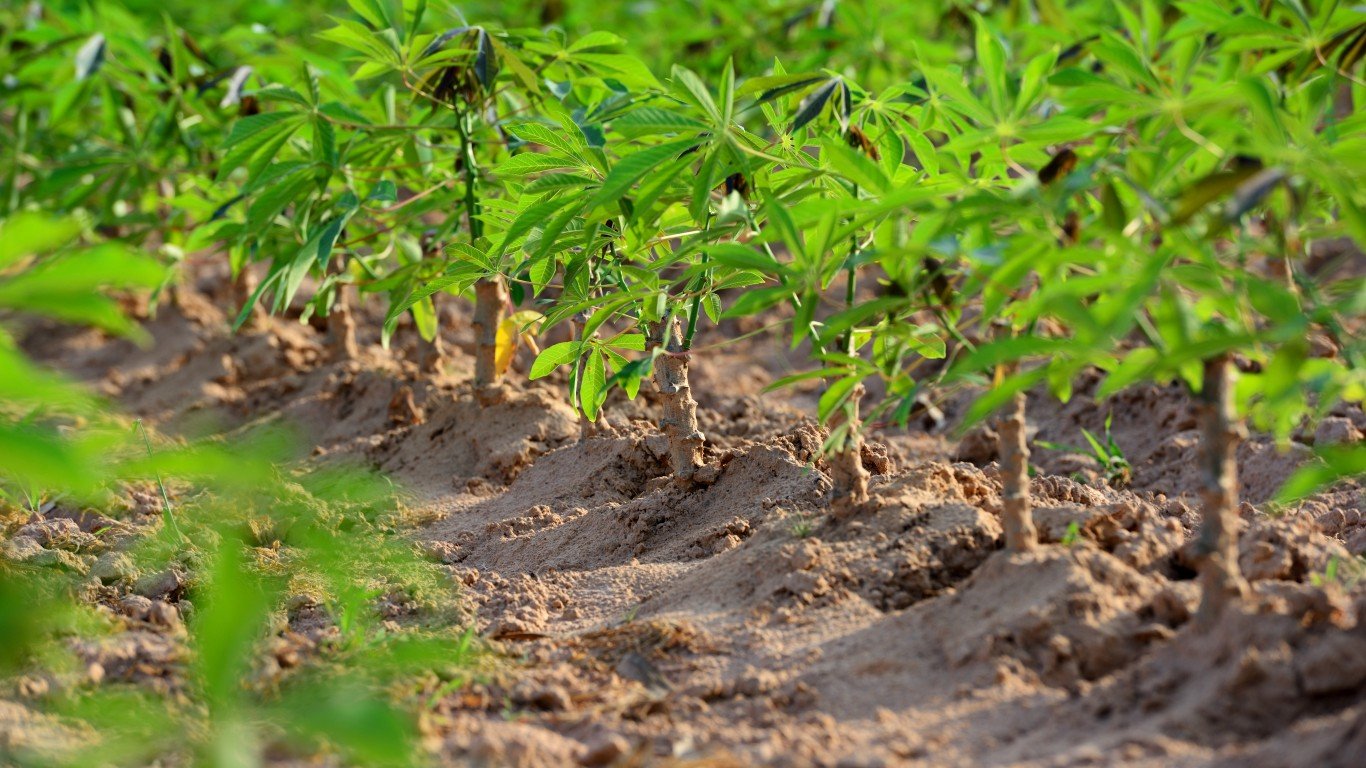
14. Cassava
> GHG emissions in kg of CO2 equivalents per kg of food: 1.3
> GHG emissions in kg of CO2 equivalents per nutritional unit: 1.4 per 1000 kcal (22 lowest)
> Land use in sq meters per kg of food: 1.8 (17th lowest)
> Freshwater withdrawal in liters per kg of food: 0.0 (1 lowest)
If you hated tapioca as a kid, blame cassava. A starchy root vegetable, cassava is consumed in many parts of the world. As a drought-resistant vegetable, it can be grown in harsh conditions. Cassava is high in what is called resistant starch, a type of starch with properties similar to soluble fiber. However, processed cassava products such as tapioca contain less resistant starch.
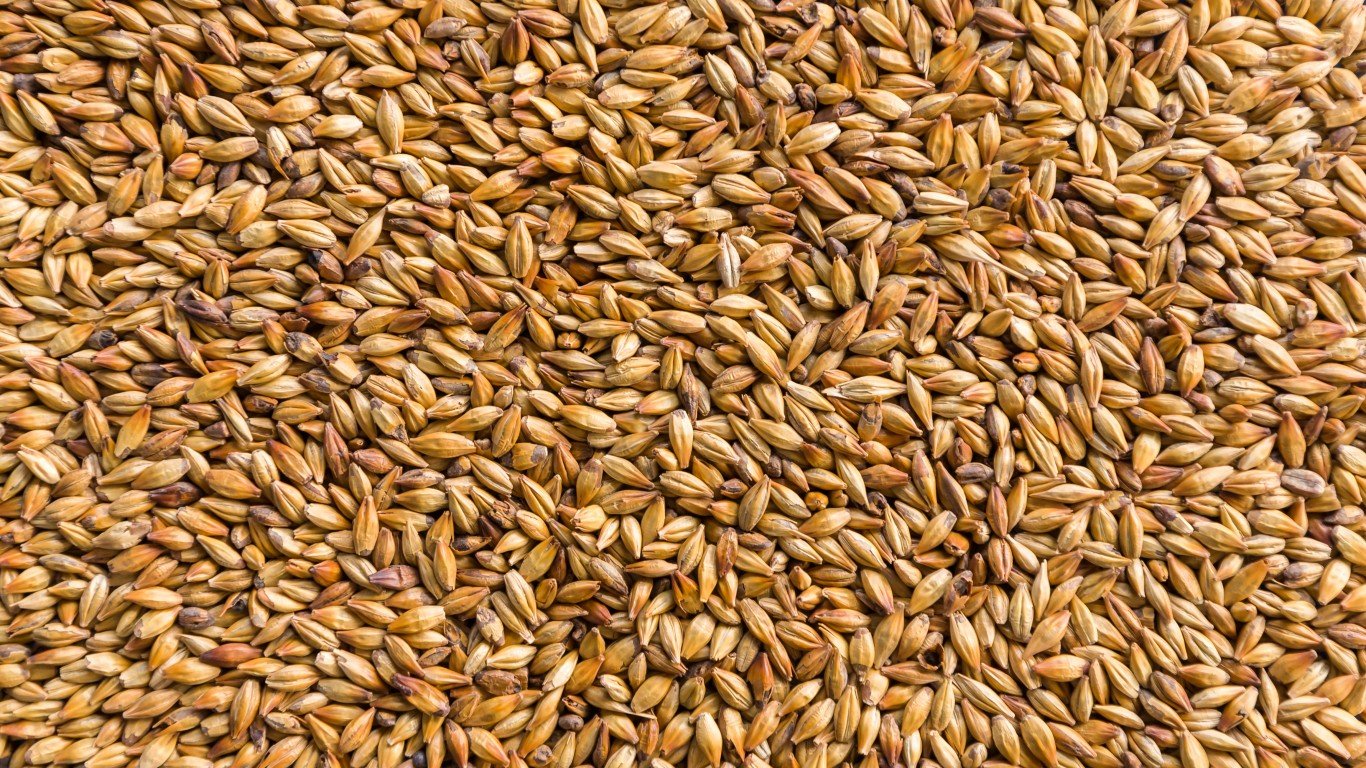
13. Barley (Beer)
> GHG emissions in kg of CO2 equivalents per kg of food: 1.2
> GHG emissions in kg of CO2 equivalents per nutritional unit: 0.2 per 1 unit (10 ml alcohol) (2 lowest)
> Land use in sq meters per kg of food: 1.1 (13th lowest)
> Freshwater withdrawal in liters per kg of food: 17.1 (4 lowest)
Barley is another cereal grain; it’s frequently used for brewing beer and making alcoholic beverages. The grain is also said to lower cholesterol and blood sugar levels. In addition to an ingredient for beer, barley is planted for erosion control. Because its roots burrow deep into the soil, winter barley protects the ground from wind and rain that erode the soil.
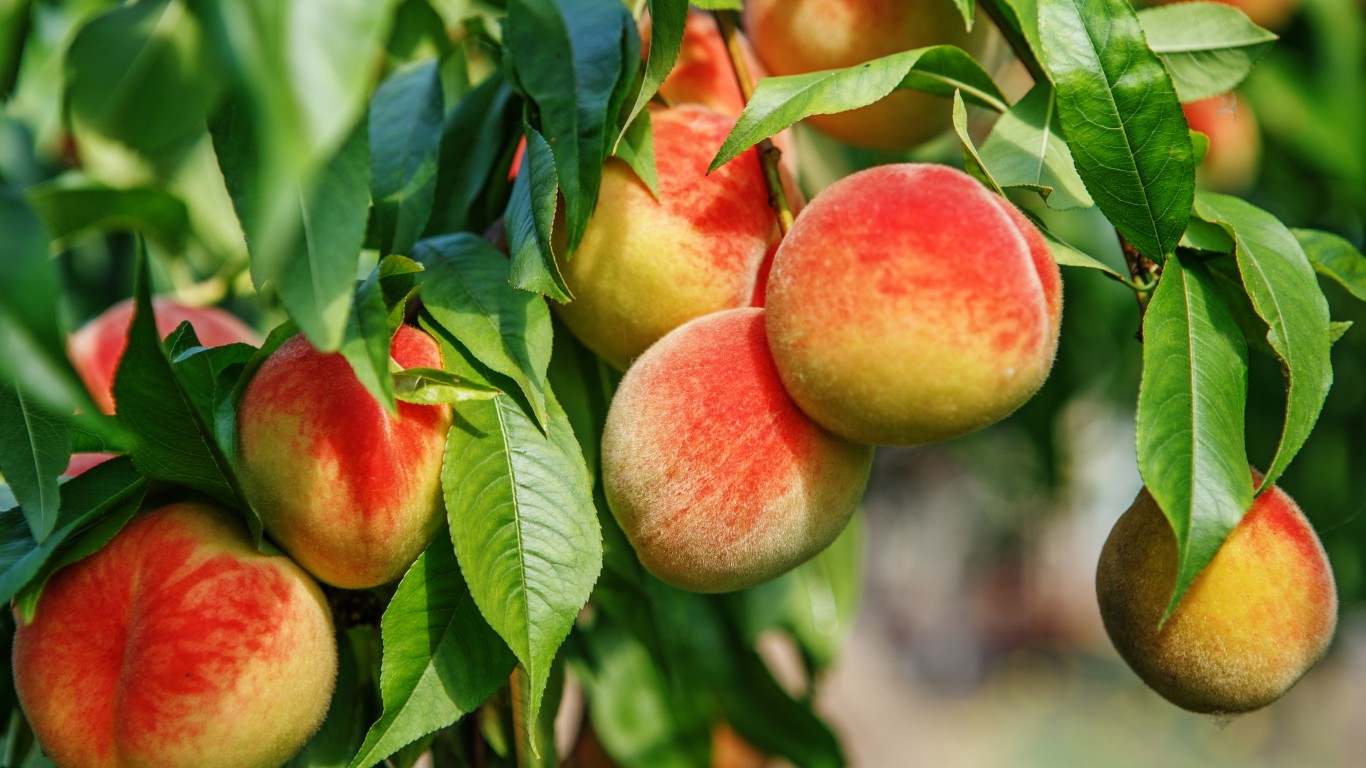
12. Other Fruit
> GHG emissions in kg of CO2 equivalents per kg of food: 1.1
> GHG emissions in kg of CO2 equivalents per nutritional unit: 1.1 per 1 kg (19 lowest)
> Land use in sq meters per kg of food: 0.9 (11th lowest)
> Freshwater withdrawal in liters per kg of food: 153.5 (15 lowest)
Science magazine breaks out citrus fruits, berries (including grapes), apples, and bananas individually and categorizes everything else as “other fruits.” That encompasses everything from familiar ones like peaches, pears, and pineapple to more exotic varieties like dragon fruit (pitaya), prickly pears, and jackfruit.
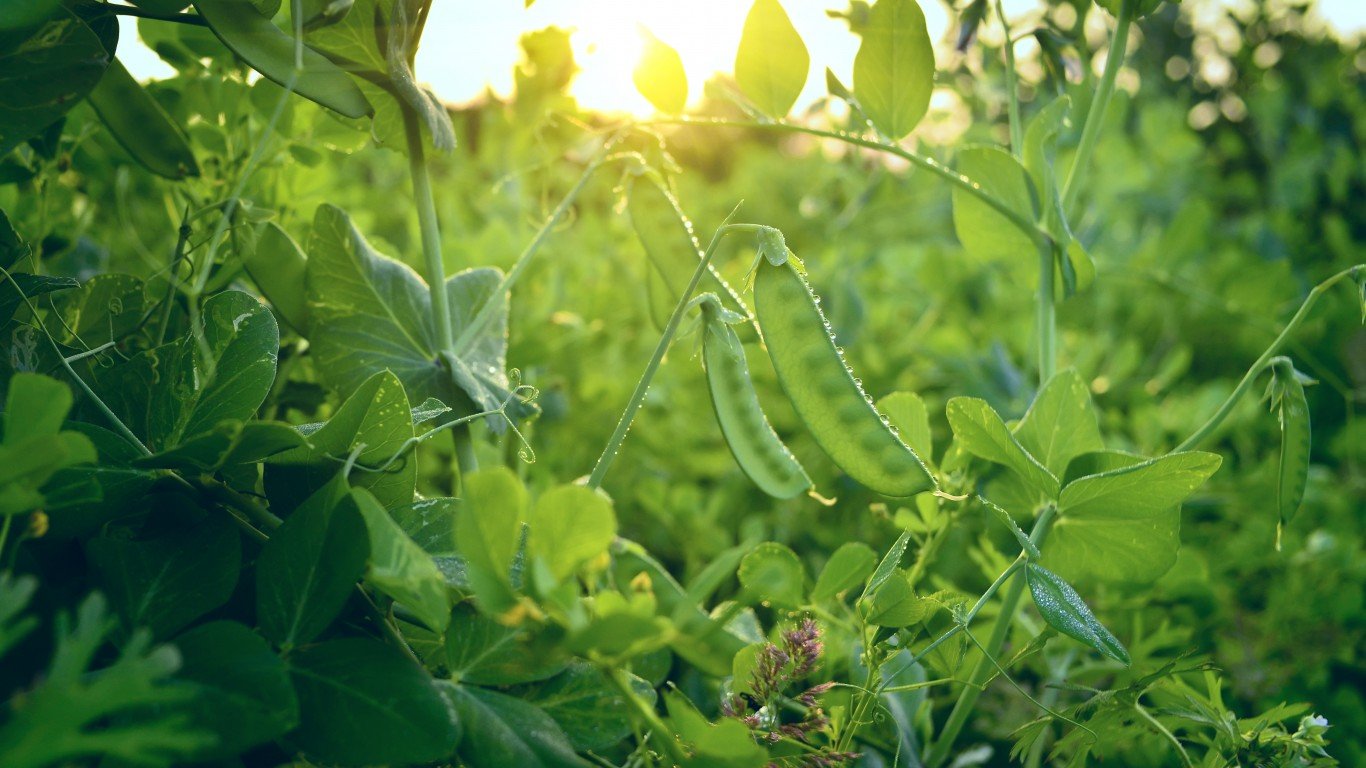
11. Peas
> GHG emissions in kg of CO2 equivalents per kg of food: 1.0
> GHG emissions in kg of CO2 equivalents per nutritional unit: 0.4 per 100 g protein (9 lowest)
> Land use in sq meters per kg of food: 7.5 (19th highest)
> Freshwater withdrawal in liters per kg of food: 396.6 (21 lowest)
A type of legume, peas are native to the Middle East – specifically Turkey and Iraq. Frozen peas are on the Environmental Working Group’s “Clean Fifteen” list, making them a safer choice for those who want to avoid pesticides. The Group also gives fresh peas a “low to moderate pesticide residue score.”






